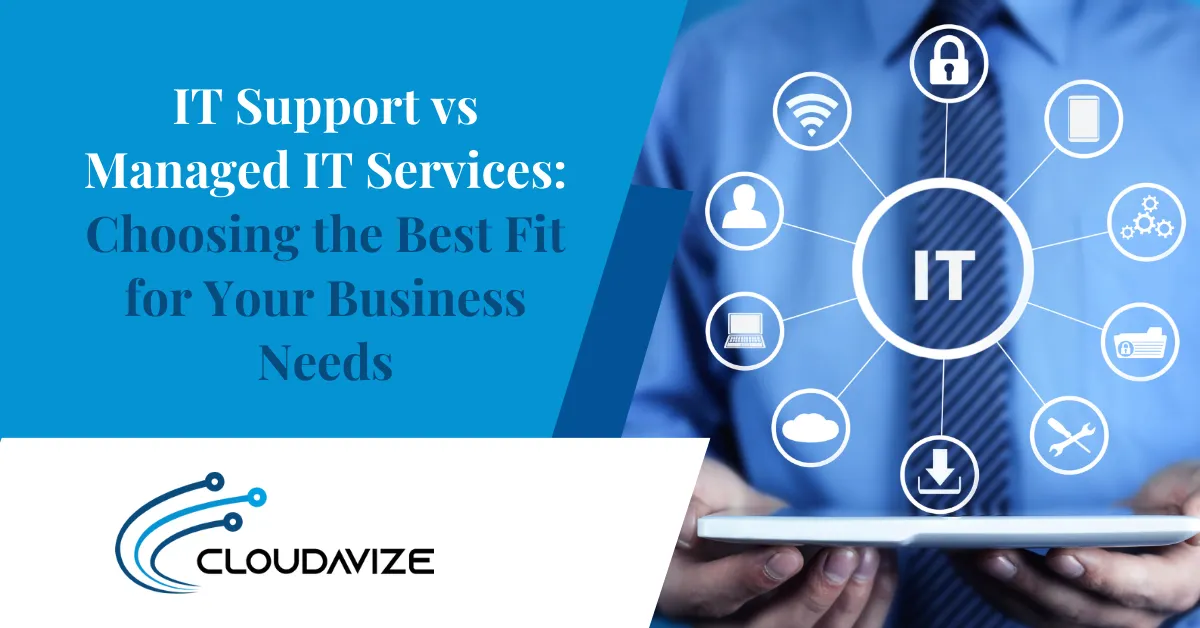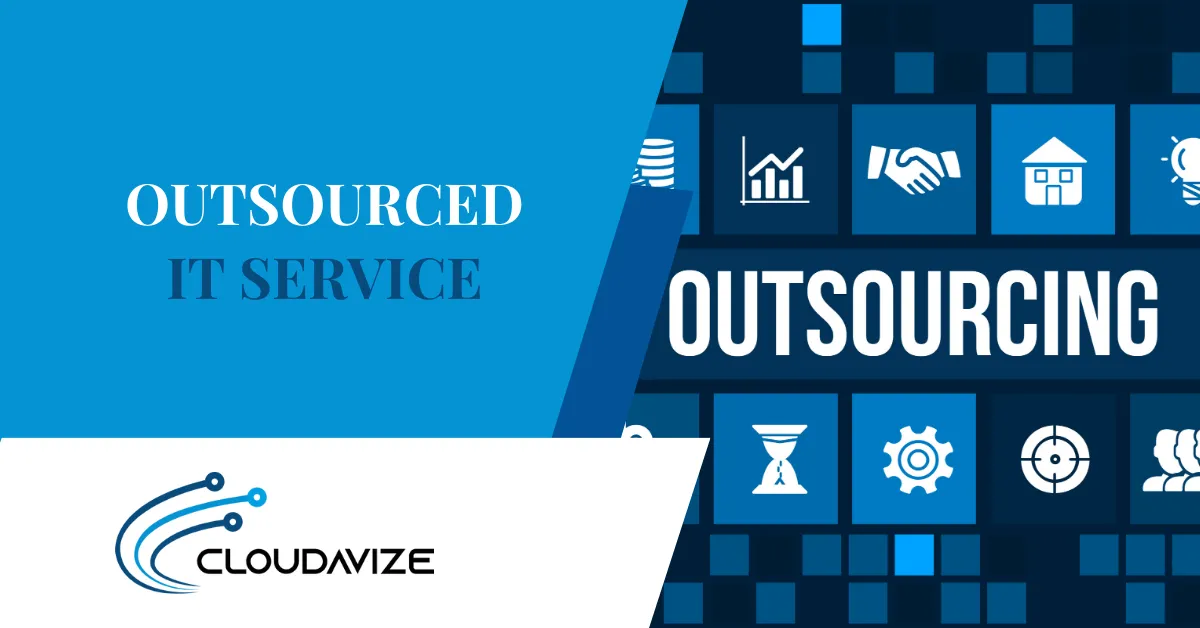IT Support resolves specific issues that need immediate attention, including troubleshooting system errors, repairing hardware, and providing helpdesk services, whereas Managed IT Services involve the proactive management of the systems and overall IT infrastructure of an organization on an ongoing basis.
IT support is available on an ad-hoc basis, making it available only if and when there is a need. It works for small to medium-sized businesses or customers with small technological needs that do not call for constant IT service access, allowing customers to pay for only the services they use. Consequently, this approach has its challenges because it does not offer a proactive approach to solving problems. This reactive approach to IT support leads to unexpected costs, which are expensive in the longer term as the operational efficiency of the firm is impaired, and help is offered only when a problem disrupts day-to-day activities.
On the other hand, Managed IT Services focus on consistent monitoring, maintenance, and resource deployment to enhance operational efficiency and reduce downtime. This framework covers services like cybersecurity, cloud management, and system performance optimization on a subscription-based approach with a flat monthly charge. Since Managed IT services are proactive in nature and offer long-term relationships, they are suitable for organizations with complex IT systems and those looking to scale the scope of their operations without compromising availability and security standards.
Table of Contents
What is IT Support?
IT support is the technical service that helps individuals or organizations troubleshoot issues with IT systems like computers, printers, networks, devices, servers, and software applications. It includes an array of services like helpdesk services, on-site troubleshooting, and system maintenance aimed at helping businesses effectively handle and manage their technologies. This break-fix model emphasizes attending to issues only when they occur and is suitable for firms with basic IT requirements or companies that need occasional IT support.
IT support is offered reactively, where a client engages IT support only when an issue arises. This on-demand and reactive IT support system involves a per-hour pay or pay-as-you-go approach, which results in varied costs depending on the complexity and frequency of incidents. Such flexibility is ideal for organizations with budget constraints. However, the on-demand nature of IT support can lead to delays since such support is made available only after the disruption of normal operations. This makes it less ideal for companies that need continuous management and active management of any possible problems.
What are Managed IT Services?
Managed IT Services are information technology (IT) related tasks of business operations that are outsourced to a third-party vendor known as a Managed Service Provider (MSP) who operates remotely. This service works proactively to effectively manage and maintain the IT infrastructure of any organization, focusing on tackling the issues before they disrupt business operations. Typical services include 24/7 monitoring, advanced cybersecurity measures, and cloud management, ensuring seamless operations and robust protection against threats.
Managed IT Services run on a fixed-fee monthly subscription fee compared to reactive models. This configuration encourages the company and the MSP to build long-term relations to achieve consistency in costs and alignment of IT systems toward achieving the overall organizational objectives. This model focuses on avoiding problems and constant monitoring, thus allowing organizations to control their IT expenditures and reduce surprises and associated costs.
Key Differences Between IT Support and Managed IT Services
| Metrics | IT Support | Managed IT Service |
| Definition | Reactive service addressing specific problems. | Proactive management of information technology infrastructure. |
| Scope of Services | Limited to troubleshooting and fixing issues. | Comprehensive management with monitoring, cybersecurity, and strategy. |
| Engagement Model | Ad-hoc and on-demand assistance. | Subscription-based with ongoing support. |
| Cost Structure | Pas-as-you-go or hourly rates. | Fixed monthly fees for a comprehensive package. |
| Service Level Agreements | Informal or non-existent. | Formal SLAs defining service expectations and accountability. |
| Response Time | Varied response time based on urgency. | Faster, guaranteed response time as per SLAs. |
| Scalability | Flexible but reactive. | Structured for growth: can adapt to changing needs. |
When to Choose IT Support?
Choose IT Support when your business has lower IT demand with tight financial limitations. This service is also optimum for companies that need immediate help without long-term commitments. Some primary considerations for IT support include the rate of occurrence of IT problems, financial constraints, and the alignment of business needs with a reactive service model. This is effective for organizations where management only wants to be concerned about issues once they arise.
Below are the situations where traditional IT support is most suitable:
- Small Businesses with Limited IT Needs:
- Organizations that are not dependent on technology daily.
- It is most suited for resolving occasional technical problems as it does not strain resources.
- Cost-Sensitive Organizations:
- Organizations with limited resources prefer pay-as-you-use to avoid monthly flat rates.
- This allows for payment only when an intervention is required.
- Established In-house IT teams:
- Companies that have small internal teams and which seek occasional expertise from outside.
- This is beneficial during peak periods or when solving unique and rare issues.
- Startups or Early-stage Businesses:
- New businesses seeking cheap IT support without a commitment to long-term contracts.
- Concentrate on solving only the most pressing issues as they scale.
When to Opt for Managed IT Services?
Managed IT Services should be adopted by businesses that require holistic management of IT services, tactical foresight over the longer term, and improved protection levels. Factors such as initiation costs and operational costs of the IT systems, their complexities, and their fit to the business’s future aspirations should also be considered. This proactive approach ensures regular monitoring, easy management, and expansion when the situation demands it.
Here are the use cases for managed IT services:
- Growing Business:
- Businesses that are growing quickly need information technology solutions to keep pace.
- Outsourcing IT functions to MSPs eliminates the need to recruit additional internal IT staff.
- Advanced Cybersecurity Needs:
- Emphasis on security in organizations requiring strict legal or safety regulations.
- Make use of perennial monitoring, risk identification, and improved risk mitigation techniques.
- Businesses with Complex IT Environments:
- Firms having various technologies or operating from several branches.
- Medium to Large Businesses Requiring 24/7 IT Support:
- Organizations have to deal with constant operational surveillance and administration of information technology to ensure business continuity.
- Companies Prioritizing Regulatory Compliance:
- Firms engaging in activities such as finance and healthcare have high operational compliance standards.
- Managed IT services follow an orderly set of operations and documents for resolving these matters.
Choosing the Right Option for Your Business
When choosing the right IT service model, companies must thoroughly assess their business size, IT complexities, financial considerations, and long-term growth. For example, small companies with minimal IT requirements may opt for IT support services as a cost-effective alternative, while midsize or fast-growing organizations prefer managed services for scalability and strategic planning. It is also important to evaluate the internal skills and potential capabilities of prospective service providers to determine their compatibility with the organization’s goals.
Assessing Business Needs
To ascertain the most suitable IT service model for your organization, you must consider the size of the business, the complexity of IT, and the available budget.
- Business Size: Smaller businesses with minimal IT requirements can take advantage of IT support services, but larger enterprises need managed services.
- Technology Complexity: Businesses with complex IT infrastructures that need ongoing management find managed services suitable.
- Budget Considerations: Managed services charge a fixed monthly fee, while IT support charges are based on the number of incidents.
- Growth Plans: Managed service enables technology scalability and strategic planning with more business focused on growth and increased IT demands.
Expert Recommendations
Professional advice guarantees that the selected service model suits the objectives of the business and its technological requirements.
- Service Level Evaluation: Select providers with SLAs that provide uptime and performance reliability metrics.
- Assess In-House Capabilities: Evaluate your team, identify shortcomings in its abilities, and seek managed services to fill them.
- Future-Proofing Your Tech Needs: Managed services provide better innovative solutions that suit the business objectives in the long run.
Guidelines for Selecting the Right Provider
The appropriate provider would include evidence of capabilities that meet your operational requirements.
- Verify References & Reviews: Check for references, testimonials, and case studies substantiating the provider’s record.
- Compatibility Check: Assess whether the provider’s way of working and company culture are suitable for the business’s operations.
- Technical Fit: Assess if the provider has worked on and is skilled in the critical platforms and tools for your processes.
- Understand Their Proposals: Analyze the contracts to comprehend the scope of services and the responsibilities of each party.
- Contract Flexibility Negotiation: Opt for contracts that permit changes without imposing penalties or sanctions.



